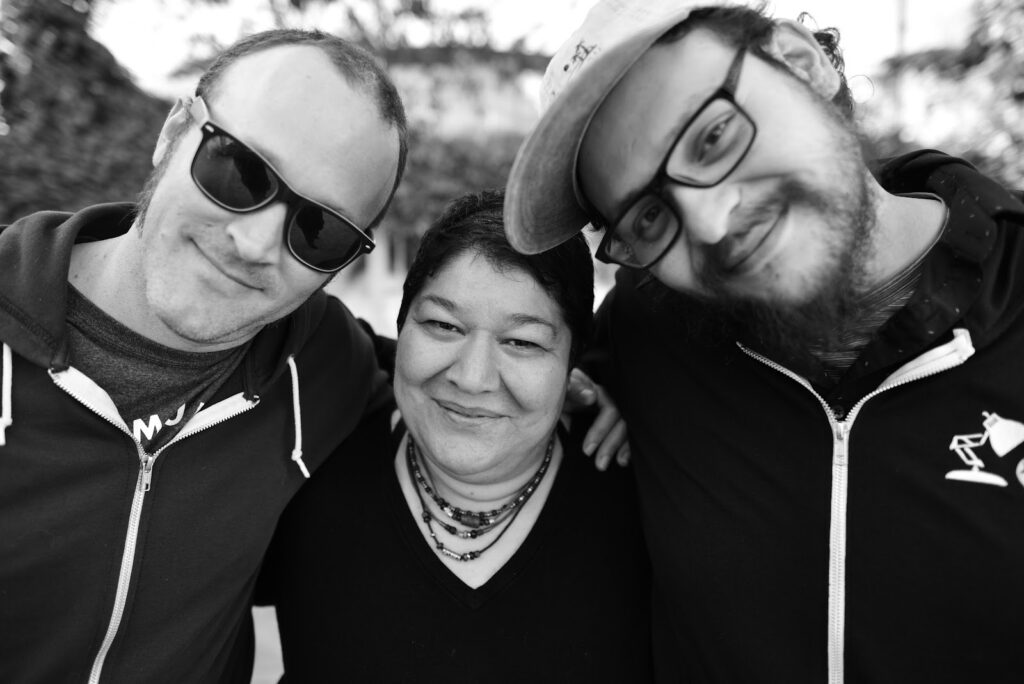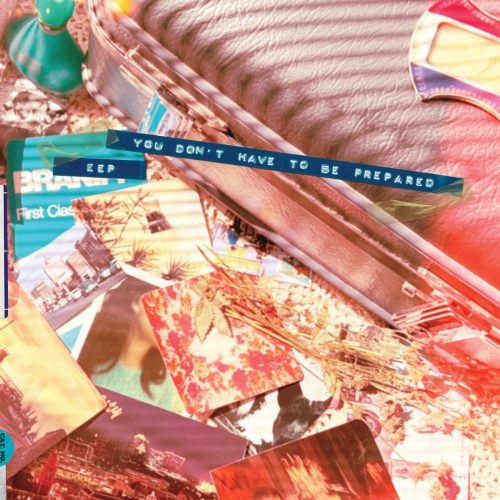By Ryan J. Nims
I used to do a lot of antiquing, usually looking for things like toy musical instruments, games, or other random pieces of interest. One day back in the early 2000s, I found a large stack of old family photos. I bought them, thinking I’d use them for some kind of art project. Going through the black-and-white photos, however, felt a bit voyeuristic. This was clearly a military family, at some point stationed in Hawaii. I was able to piece together a story of the lives of those people within the neglected images.
I never did make that art project.
Sometimes, finding someone’s discarded items can inspire a rush of creativity. Such is the case with El Paso band EEP’s newest album, You Don’t Have To Be Prepared, which was inspired by the discovery of an old reel-to-reel tape, recorded in the late 70s or early 80s by a woman believed to be named Anne. Paired with a dictaphone purchased alongside a Hammond Cougar organ, the band decided to try to tell Anne’s story through song.
EEP came on the scene at the start of the decade, releasing 2020’s Death of a Very Good Machine and 2021’s Winter Skin on their own label Hogar Records. Initially made up of multi-instrumentalists/singers Rosie Varela, Ross Ingram, and Sebastian Estrada, along with guitarist/vocalist Serge Carrasco (also of The Anhedonians), and drummer Lawrence Brown III, EEP make dream-pop and shoegaze music, with a lyrical focus on personal and social topics. Sometime after Winter Skin, Carrasco and Brown left the band, while the other three chose to continue making music, though not sure the direction it would take.
That was until they found the reel-to-reel tape, and thus You Don’t Have To Be Prepared was born. Of the circumstances that birthed the album, Varela says: “Live your life, take your risks, take your chances, and hope for the best. Things are happening for you and even when they don’t work out, something else will come along.”
Ingram’s studio, Brainville, became as much of a part of the recording as the band members themselves, aiming to create the best music they could with the tools at their disposal, without concern for being able to recreate them live. Without a drummer, the members of EEP each contributed percussion to the album. According to Ingram, “We’re always trying to find new sounds, and we were able to do that by digging into our individual abilities.”

L-R: Ross Ingram, Rosie Varela, & Sebastian Estrada (Photo by Kenny Rapadas)
The album opens with “Ghost,” sung chiefly by Ingram, with some great harmonies and lead parts by the other two members. While lyrically, the “ghost” could be things from one’s past that are hanging on, I like to think the song could be a reference to the tape itself; the voice contained within being the ghost that’s “dragged from town to town.”
“My Lack of Symmetry” is built on a drum machine hook and swaths of synth and airy guitar effects, culminating in a brief wall of noise before fading out.
The experimental “14 Days” opens with a wash of synth noise and drum machine loop, before Varela’s voice breaks in. Ingram and Varela trade vocal leads and harmonize throughout this subdued electronic track.
The intro to “Here’s What I Want You To Forget” is built around a brief snippet of Anne talking while playing an organ. The song opened up to an expansive, layered track with three drum sets and Ingram’s vocals drenched in reverb.
The centerpiece of the album, “Here’s What I Want You To Remember,” includes a long excerpt of the tape, wherein Anne expresses her love for her intended listener, backed by an instrumental dream pop score.
This leads to another instrumental track called “On Tenterhooks,” a jazzy backbeat with shimmering guitars and bass.
Named after the city in Kansas where Anne originated, “Clay Center” starts on Estrada’s singing with Varela and Ingram backing him up in a sort of call-and-response style over a piano and drum sample. Towards the end, the piano is joined by a wash of guitar feedback.
The shoegaze-y “Always” follows, with heavy, distorted guitars, a tight rhythm section, and ethereal harmonies. According to the band, the song represents Anne’s arrival in El Paso to begin her new life.
The six-minute title track closes the album. All three vocalists sing a pretty complicated harmony throughout the track. The album ends on a final piece from the tape recording, with Anne wishing the listener a good night.
The album is very good, and has a pretty diverse sound palette. It’s less shoegaze than their previous releases, but the textures are still dreamlike, and the songs expertly crafted. From the opening chords to the closing spoken word, the album takes the listener on a thoughtful journey. Recommended for fans of the now-retired Gazing Ball, or Beat Happenings (Fridays, 6:00 pm – 7:00 pm).
